- Home
- C. S. Lewis
The Chronicles of Narnia Complete 7-Book Collection with Bonus Book
The Chronicles of Narnia Complete 7-Book Collection with Bonus Book Read online
Contents
Introduction
The Magician’s Nephew
Dedication
Chapter One: The Wrong Door
Chapter Two: Digory and His Uncle
Chapter Three: The Wood Between the Worlds
Chapter Four: The Bell and the Hammer
Chapter Five: The Deplorable Word
Chapter Six: The Beginning of Uncle Andrew’s Troubles
Chapter Seven: What Happened at the Front Door
Chapter Eight: The Fight at the Lamp-post
Chapter Nine: The Founding of Narnia
Chapter Ten: The First Joke and Other Matters
Chapter Eleven: Digory and His Uncle Are Both in Trouble
Chapter Twelve: Strawberry’s Adventure
Chapter Thirteen: An Unexpected Meeting
Chapter Fourteen: The Planting of the Tree
Chapter Fifteen: The End of This Story and the Beginning of All the Others
The Lion, the Witch and the Wardrobe
Dedication
Chapter One: Lucy Looks into a Wardrobe
Chapter Two: What Lucy Found There
Chapter Three: Edmund and the Wardrobe
Chapter Four: Turkish Delight
Chapter Five: Back on This Side of the Door
Chapter Six: Into the Forest
Chapter Seven: A Day with the Beavers
Chapter Eight: What Happened after Dinner
Chapter Nine: In the Witch’s House
Chapter Ten: The Spell Begins to Break
Chapter Eleven: Aslan Is Nearer
Chapter Twelve: Peter’s First Battle
Chapter Thirteen: Deep Magic from the Dawn of Time
Chapter Fourteen: The Triumph of the Witch
Chapter Fifteen: Deeper Magic from Before the Dawn of Time
Chapter Sixteen: What Happened about the Statues
Chapter Seventeen: The Hunting of the White Stag
The Horse and His Boy
Dedication
Chapter One: How Shasta Set Out on His Travels
Chapter Two: A Wayside Adventure
Chapter Three: At the Gates of Tashbaan
Chapter Four: Shasta Falls In With the Narnians
Chapter Five: Prince Corin
Chapter Six: Shasta Among the Tombs
Chapter Seven: Aravis in Tashbaan
Chapter Eight: In the House of the Tisroc
Chapter Nine: Across the Desert
Chapter Ten: The Hermit of the Southern March
Chapter Eleven: The Unwelcome Fellow Traveler
Chapter Twelve: Shasta in Narnia
Chapter Thirteen: The Fight at Anvard
Chapter Fourteen: How Bree Became a Wiser Horse
Chapter Fifteen: Rabadash the Ridiculous
Prince Caspian
Dedication
Chapter One: The Island
Chapter Two: The Ancient Treasure House
Chapter Three: The Dwarf
Chapter Four: The Dwarf Tells of Prince Caspian
Chapter Five: Caspian’s Adventure in the Mountains
Chapter Six: The People That Lived in Hiding
Chapter Seven: Old Narnia in Danger
Chapter Eight: How They Left the Island
Chapter Nine: What Lucy Saw
Chapter Ten: The Return of the Lion
Chapter Eleven: The Lion Roars
Chapter Twelve: Sorcery and Sudden Vengeance
Chapter Thirteen: The High King in Command
Chapter Fourteen: How All Were Very Busy
Chapter Fifteen: Aslan Makes a Door in the Air
The Voyage of the Dawn Treader
Dedication
Chapter One: The Picture in the Bedroom
Chapter Two: On Board the Dawn Treader
Chapter Three: The Lone Islands
Chapter Four: What Caspian Did There
Chapter Five: The Storm and What Came of It
Chapter Six: The Adventures of Eustace
Chapter Seven: How the Adventure Ended
Chapter Eight: Two Narrow Escapes
Chapter Nine: The Island of the Voices
Chapter Ten: The Magician’s Book
Chapter Eleven: The Dufflepuds Made Happy
Chapter Twelve: The Dark Island
Chapter Thirteen: The Three Sleepers
Chapter Fourteen: The Beginning of the End of the World
Chapter Fifteen: The Wonders of the Last Sea
Chapter Sixteen: The Very End of the World
The Silver Chair
Dedication
Chapter One: Behind the Gym
Chapter Two: Jill Is Given a Task
Chapter Three: The Sailing of the King
Chapter Four: A Parliament of Owls
Chapter Five: Puddleglum
Chapter Six: The Wild Waste Lands of the North
Chapter Seven: The Hill of the Strange Trenches
Chapter Eight: The House of Harfang
Chapter Nine: How They Discovered Something Worth Knowing
Chapter Ten: Travels Without the Sun
Chapter Eleven: In the Dark Castle
Chapter Twelve: The Queen of Underland
Chapter Thirteen: Underland Without the Queen
Chapter Fourteen: The Bottom of the World
Chapter Fifteen: The Disappearance of Jill
Chapter Sixteen: The Healing of Harms
The Last Battle
Chapter One: By Caldron Pool
Chapter Two: The Rashness of the King
Chapter Three: The Ape in Its Glory
Chapter Four: What Happened That Night
Chapter Five: How Help Came to the King
Chapter Six: A Good Night’s Work
Chapter Seven: Mainly About Dwarfs
Chapter Eight: What News the Eagle Brought
Chapter Nine: The Great Meeting on Stable Hill
Chapter Ten: Who Will Go Into the Stable?
Chapter Eleven: The Pace Quickens
Chapter Twelve: Through the Stable Door
Chapter Thirteen: How the Dwarfs Refused to Be Taken In
Chapter Fourteen: Night Falls on Narnia
Chapter Fifteen: Further Up and Further In
Chapter Sixteen: Farewell to Shadowlands
Boxen
Introduction
Animal-Land
The King’s Ring
Manx Against Manx
The Relief of Murry
History of Mouse-Land from Stone-Age to Bublish I (Old History)
History of Animal-Land (New History)
The Chess Monograph
The Geography of Animal-Land
Boxen
Boxen: or Scenes from Boxonian City Life
The Locked Door and Than-Kyu
The Sailor
Littera Scripta Manet
Tararo
The Life of Lord John Big of Bigham
Encyclopedia Boxoniana
The History of Boxen
Copyright
About the Author
Back Ads
Credit
Copyright
About the Publisher
Introduction
A Conversation with Douglas Gresham
All their life in this world and all their adventures in Narnia had only been the cover and the title page: now at last they were beginning Chapter One of the Great Story which no one on earth has read: which goes on forever: in which every chapter is better than the one before.
—The Last Battle
On November 22, 1963, C. S. Lewis began the Great Story,
and his fans around the world lost their beloved author. In honor of the 50th anniversary of his passing, you are invited to join in on an exclusive conversation with Douglas Gresham, Lewis’s stepson, who lived with him at his home, The Kilns, from the age of ten.
Mr. Gresham remembers his stepfather, Jack, telling stories about how as boys, he and his brother, Warnie, crossed the Irish Sea from Belfast on a steamer to get to boarding school in England. Though Warnie suffered terri- ble seasickness, Jack delighted in the voyages and would dash about the ship with great enthusiasm. He loved the sights, sounds, smells, and liveliness of the sea, which he vividly depicted in The Voyage of the Dawn Treader. Mr. Gresham also recalls Jack’s famous friendship with J. R. R. Tolkien (Tollers, to Jack), a bond that grew from shared values in literature and ultimately encouraged the men to write The Chronicles of Narnia and The Lord of the Rings and The Hobbit, respectively, works now included in the canon of classic literature. Mr. Gresham continues to see the legacy of Narnia carried on worldwide and more intimately within his own family—his tenth grand-child is called Caspian, a name that, to him, stands for something far-off and adventurous, a touch magical and wondrous.
On this momentous occasion, Mr. Gresham graciously shares these and other personal memories of growing up with the author of Narnia while he was still writing the series, and pays tribute to the lasting impression C. S. Lewis made on generations of readers.
1. You told us that C. S. Lewis always said that if a book was worth reading when you are five, it should be equally worth reading when you are fifty, or any age at all. How do you think people react to The Chronicles of Narnia as children, and how is that different when reading the books as adults?
Children have the ability to more easily project themselves into the fantasy, and unless they savour and practice this skill, it tends to fade as life and the world get in the way. Grown-up people who do not have this skill must relearn it to become a part of Narnia in the way that children do. Also, young children have often not yet been indoctrinated regarding what is real and what is not and what can happen and what is impossible; thus they can accept fantasy far more readily than adults can instead of somehow validating it by calling it “news” or “reality.” Children have a far better and undimmed sense of truth than adults.
2. Why did your stepfather set out to write a children’s book? Did he talk about the process and if it was different from writing an adult book?
I think it all goes back to a conversation, or series of conversations, between my stepfather and Tolkien, and possibly others as well. They seem to have talked about the children’s literature of the late 1940s and early 1950s with dismay, finding nothing that they would have enjoyed as children or even could enjoy as adults. The literature that children were being expected to read and enjoy at that time seemed to teach them things that sensible parents would rather their children did not learn—all about “issues” and “complexes” and such. High Adventure, Chivalry, Personal Responsibility, Personal Commitment, Duty, Honor, Courtesy, and Honesty all seemed to have been dismissed as out of date or passé. Jack and Tolkien both agreed that such qualities and virtues were essential to human civilization and decided that they themselves had better have a try at writing about them. So they did.
3. From what literary influences did C. S. Lewis draw his inspiration for Narnia? What types of mythology and literature have been blended to form the world and the creatures of that land?
Jack drew from the huge wealth of knowledge he had gleaned over many years by his own voracious reading. He drew from all the ancient mythologies of the world: Greece, Rome; he also borrowed from Scandinavian mythology, Persian, and Egyptian—even from the history of the ancient East. His Calormen civilization, for example, comes from the ages-past Moghul Empire of India, while his Narnian Dwarfs came from the far North of Europe. He also drew his characters from people whom he knew. Puddleglum the Marsh-wiggle, a member of Jack’s only completely original species, the Marsh-wiggles of the Shribble Marshes, was drawn from the wonderful character of Frederick Calcutt Paxford, our gardener at The Kilns, our home in Oxfordshire.
4. Were you ever in the same room with C. S. Lewis while he was writing? What was that like? Did he ever discuss or share how his writing went that day?
Several times, but I was always careful not to be an intrusive or distractive presence. I had been raised by writers and knew very well that to sit silently reading was acceptable; to fidget and talk or otherwise intrude was not. Jack was very forgiving though. But as a normal everyday thing, Jack would retire to his upstairs study or down to Warnie’s study to write; only occasionally did he sit at the old desk in the bay window of the Common Room, as we called our sitting room and where I was likely to be, to write. I would occasionally ask him what he had been working on, and he would tell me in some detail or even read a passage to me if he thought the matter would interest me. We had a household word for arrant nonsense, which was “bilge”; and if Jack was working on something deep and complex, some academic essay or something that he knew I would neither enjoy nor understand, he would laugh and say self-deprecatingly, “Oh just bilge, Doug, just bilge,” and we would both laugh, for I knew all too well that what he referred to as “just bilge” was likely to be work of great value to the world and the people of it.
5. When was the first time you read a Narnia book, and what did you think of it? How did you come to read the other books?
I first encountered Narnia when my mother read The Lion, the Witch and the Wardrobe to me, in my bedroom in our huge old house near Staatsburg in upstate New York, chapter by chapter, one per night, as a bedtime story. Neither of us had yet met Jack, of course. I was about six years old then, I think, and I was fascinated and enthralled from the first words. Now, more than sixty years later, I still am. As soon as another Narnia book became available, that too was read to me, and at some stage along my journeys into Narnia, I learned to read for myself, the process accelerated by my need to return to Narnia again and again, and I began to read the books over and over again; I still do.
6. What other books did you read as a child? Were they books that Jack recommended you read? How do they contribute to your experience of Narnia?
Wow, that is a big question! Almost everything I read as a young child was recommended by either my mother, Jack, or Warnie. Later, of course, I began to explore the shelves at will. The Kilns was full of books. Whenever the weather was inclement, which (despite some halcyon days in summer and astonishingly beautiful days of frost or snow in winter) seemed to be a lot of the time in Oxford, I would be found in either the Common Room or on the dining room sofa deep in a book. I read all I could get my hands on of Mark Twain, John Buchan, E. Nesbit, Jack London, Charles Dickens, Ernest Thompson Seton, George MacDonald, Roger Lancelyn Green, John Galsworthy, and many others. The books that Mother, Jack, and Warnie recommended always fascinated, and nothing was forbidden, nothing censored. I read the complete works of William Shakespeare before I was fourteen (not without some considerable effort, I confess). I discovered that the wisdom of the world, and a great deal of its folly also, is to be found in the pages of books. And throughout it all, I kept returning to old favorites again and again: The Chronicles of Narnia and The Lord of the Rings and later Till We Have Faces. The more I read of other writers, the more I discovered how good the tales of Narnia really are.
7. Do you know what books Jack may have read as a child?
Many of those same authors I have enumerated above. He recommended to me those books that he had loved as a child, as did Mother and Warnie.
8. Do you have a favorite title in the Narnia series? Did Jack? If so, which and what makes it stand out for either of you?
For me, it is always whichever of them I am reading at the time that question is asked. But Jack most liked The Last Battle, and for very simple reasons. Contrary to some theories that have recently been bandied about, Jack never intended, nor set out, to write a series of books about Narnia. When he
wrote The Lion, the Witch and the Wardrobe and sent it off to Geoffrey Bles (its first publisher), he thought he had written a one-off novel for children and that would be the end of it. But quite soon Prince Caspian demanded his attention and he wrote that one too, then The Dawn Treader climbed up over the horizon of the Narnia Eastern Sea and Jack had to write that adventure too, and so it went on. At last, Jack, determinedly and with celestial permission from his Muse, wrote The Last Battle, in which the heaven of Narnia at last became Heaven, and he sent it off to Spencer Curtis Brown, his then literary agent, with a sigh of relief. This work, which had grown of itself and which he had never intended, was rounded off and finished. Jack liked The Last Battle the best because its culmination was his vision of True Heaven imposed on a Narnian context, Narnia itself being a shadow of his childhood vision of heaven. In other words, true Narnia became to Narnia what Jack imagined Heaven will be to Earth. And also he liked it because it was his last Narnian battle.
9. Who were some of your favorite Narnians growing up?
Apart from Aslan, whom everyone has to love—but from a safe distance in most cases—Puddleglum is one of my favorites because he brings back to me a man whom I loved a great deal and who had helped me through so many childish dilemmas and sorrows. Reepicheep is another for his valor and purity. Among the Knights of King Arthur’s Court, while my schoolmates all wanted to be Launcelot, I always wanted to be Galahad (still do, I suppose), and Reepicheep is that pure Knight of Narnia, much like Galahad was the pure Knight of King Arthur’s court. Shasta/Cor, Prince of Archenland, appeals to me greatly, too.
10. You’ve mentioned Frederick Calcutt Paxford twice now, the man after whom Puddleglum the Marsh-wiggle is modeled, and his impact on you. Can you tell us more about him? Was he like Puddleglum? What was his relationship with Jack? With you?
Fred was exactly like Puddleglum in character, the outwardly ever- pessimistic covert optimist, although the two have no physical resemblance at all. Fred was heavyset and stout and of average height; Puddleglum very tall, very thin. He was a veteran of the horror of the trenches of the First World War and had suffered from a poison gas attack. He and Jack were in some ways kindred spirits, both possessing in great measure the virtues of honesty and kindness. Fred was a great friend to me at a time in my life when I most needed one. We became friends out in the “gyaarden,” as Fred pronounced the word, of The Kilns and soon discovered that we shared common interests. He taught me things that would perhaps be good-naturedly frowned upon by Jack and Warnie, like how to set snares for rabbits, how to maze a hare, how to shoot straight with a 12-bore shotgun, how to plough a straight furrow with a horse-drawn plough, and innumerable other things of more value than almost anything I ever learned at any school. I was weeping softly beneath the old weeping willow tree out by The Kilns themselves the day my mother died when Fred joined me, laid his massive arm gently across my shoulders, and held me to him. “Doant cry, son,” he said softly; but the effect was spoiled somewhat by the tears I saw running down his face. Fred was a good friend.

 The Lion, the Witch, and the Wardrobe
The Lion, the Witch, and the Wardrobe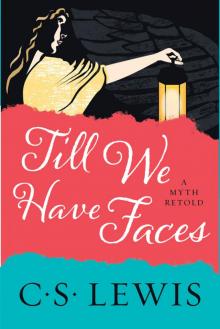 Till We Have Faces
Till We Have Faces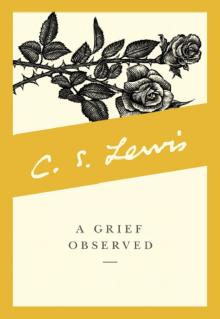 A Grief Observed
A Grief Observed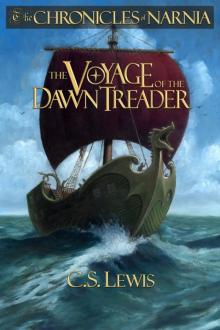 The Voyage of the Dawn Treader
The Voyage of the Dawn Treader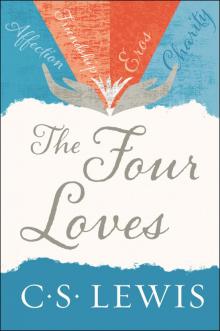 The Four Loves
The Four Loves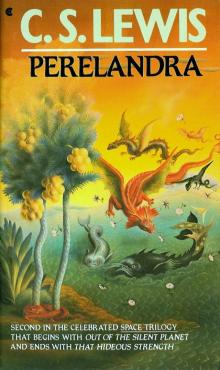 Perelandra
Perelandra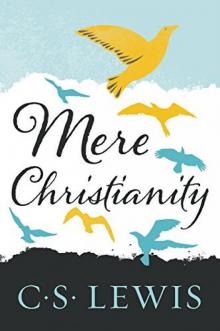 Mere Christianity
Mere Christianity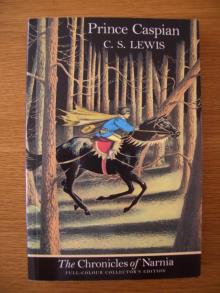 Prince Caspian
Prince Caspian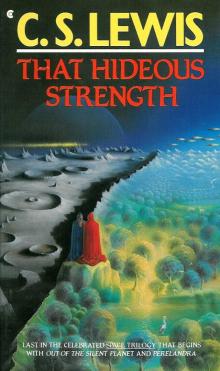 That Hideous Strength
That Hideous Strength The Magicians Nephew
The Magicians Nephew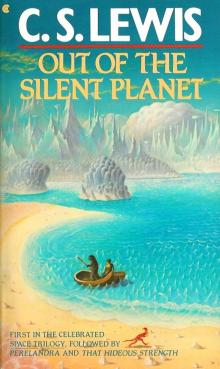 Out of the Silent Planet
Out of the Silent Planet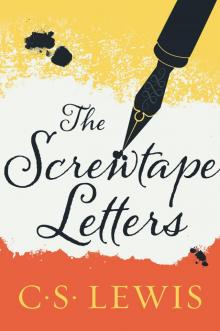 The Screwtape Letters
The Screwtape Letters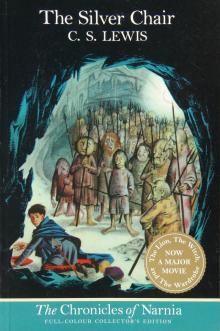 The Silver Chair
The Silver Chair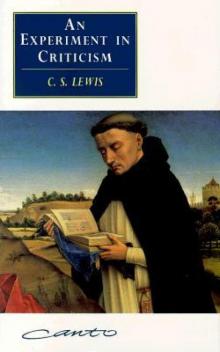 An Experiment in Criticism
An Experiment in Criticism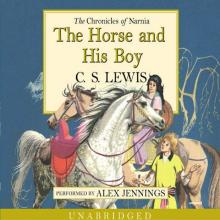 The Horse and His Boy
The Horse and His Boy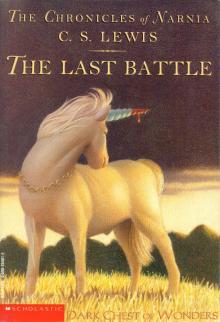 The Last Battle
The Last Battle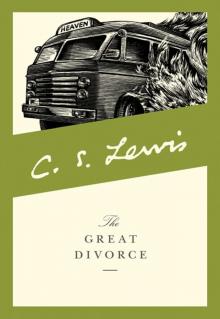 The Great Divorce
The Great Divorce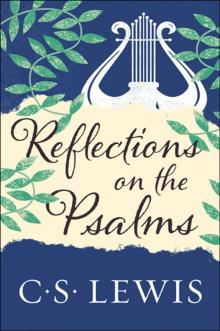 Reflections on the Psalms
Reflections on the Psalms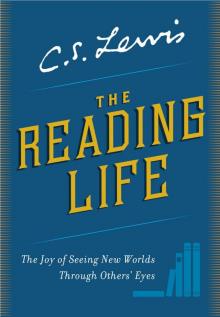 The Reading Life
The Reading Life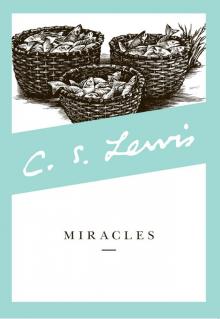 Miracles
Miracles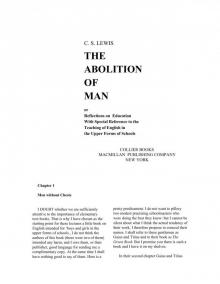 Lewis new
Lewis new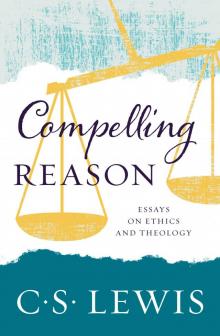 Compelling Reason
Compelling Reason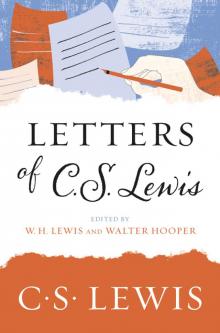 Letters of C. S. Lewis
Letters of C. S. Lewis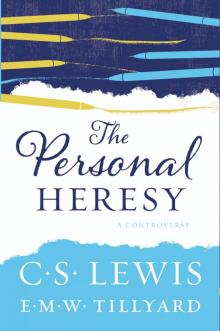 The Personal Heresy
The Personal Heresy The Lion, The Witch And The Wardrobe
The Lion, The Witch And The Wardrobe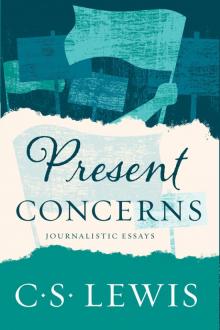 Present Concerns
Present Concerns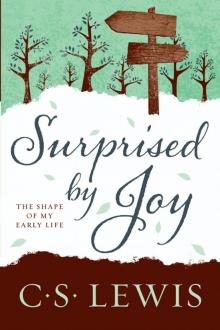 Surprised by Joy
Surprised by Joy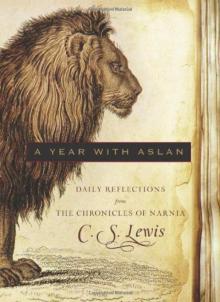 A Year with Aslan: Daily Reflections from The Chronicles of Narnia
A Year with Aslan: Daily Reflections from The Chronicles of Narnia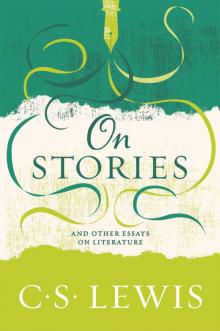 On Stories
On Stories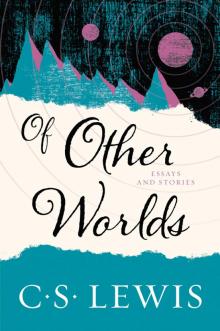 Of Other Worlds
Of Other Worlds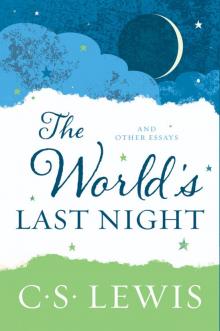 The World's Last Night
The World's Last Night The Discarded Image
The Discarded Image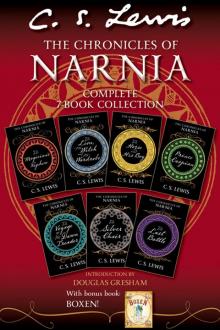 The Chronicles of Narnia Complete 7-Book Collection with Bonus Book
The Chronicles of Narnia Complete 7-Book Collection with Bonus Book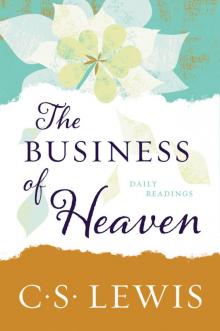 The Business of Heaven
The Business of Heaven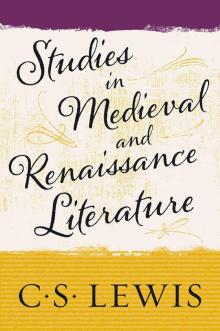 Studies in Medieval and Renaissance Literature
Studies in Medieval and Renaissance Literature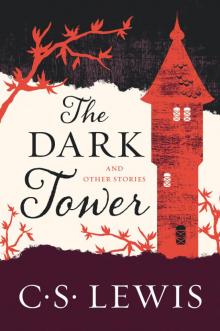 The Dark Tower
The Dark Tower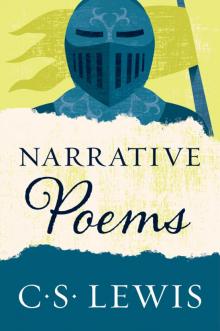 Narrative Poems
Narrative Poems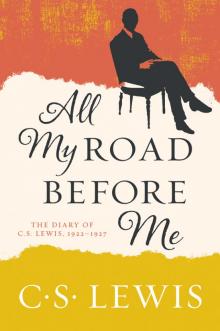 All My Road Before Me
All My Road Before Me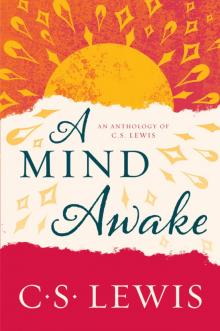 A Mind Awake
A Mind Awake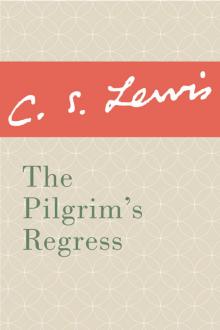 The Pilgrim's Regress
The Pilgrim's Regress